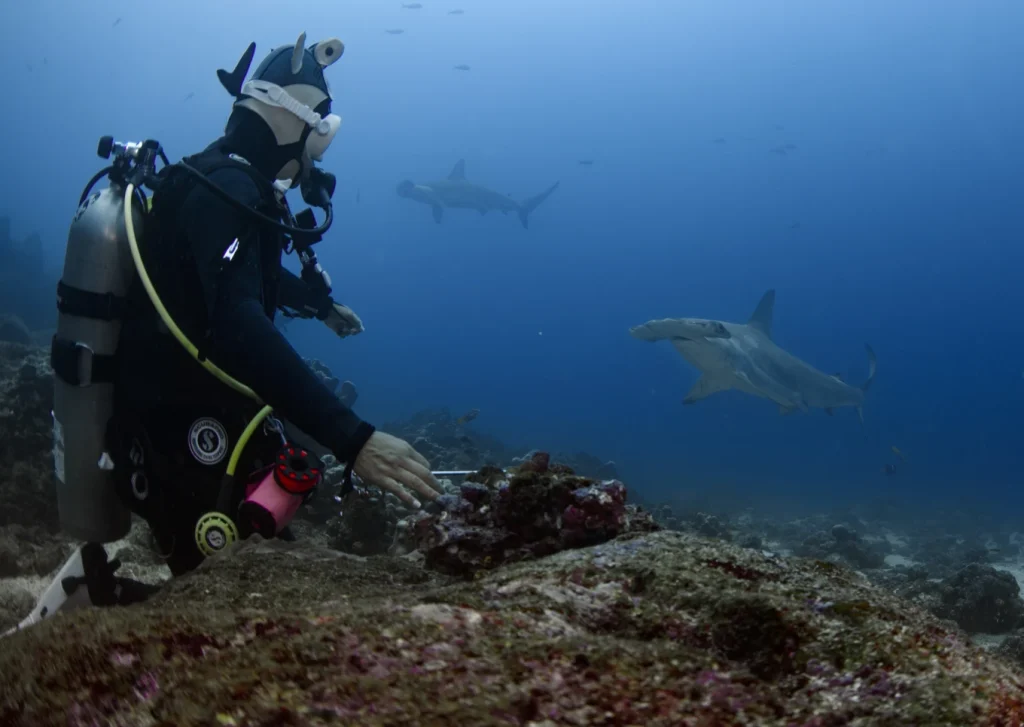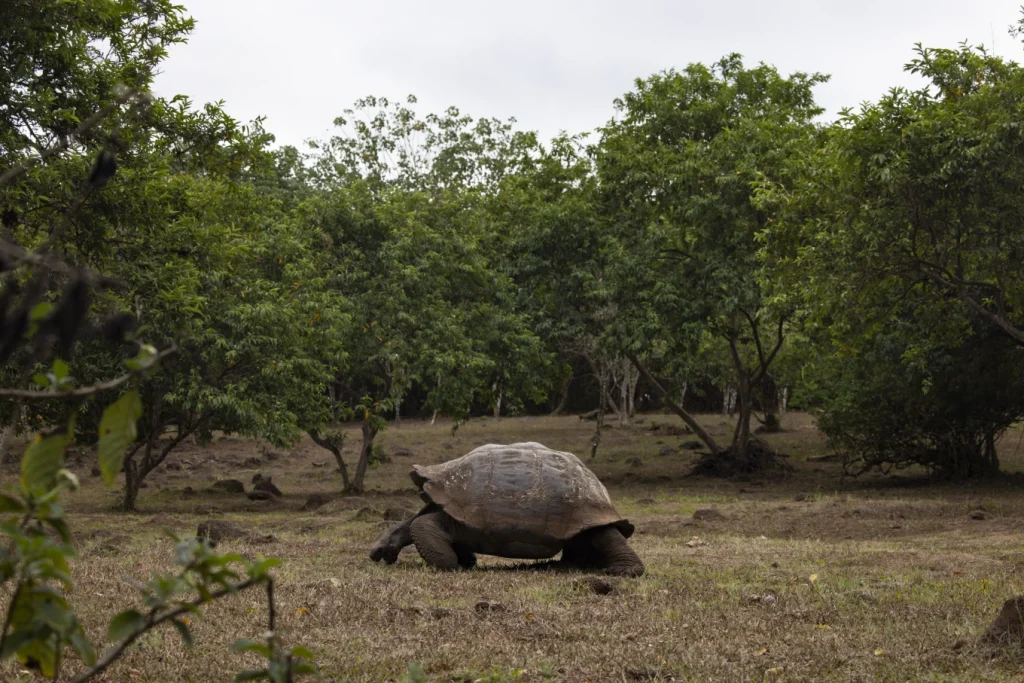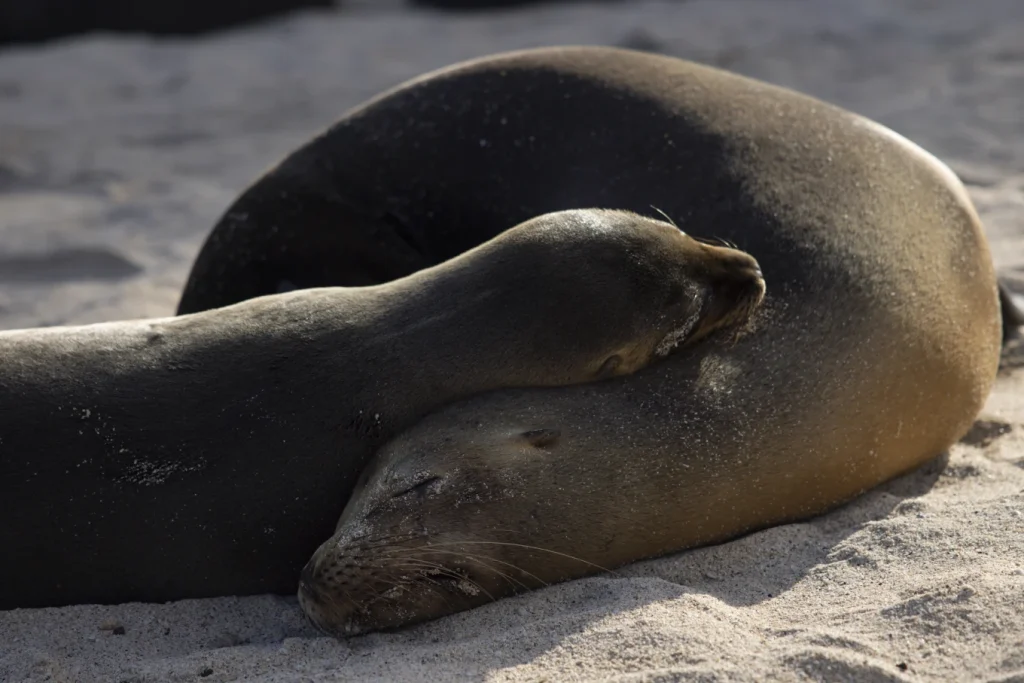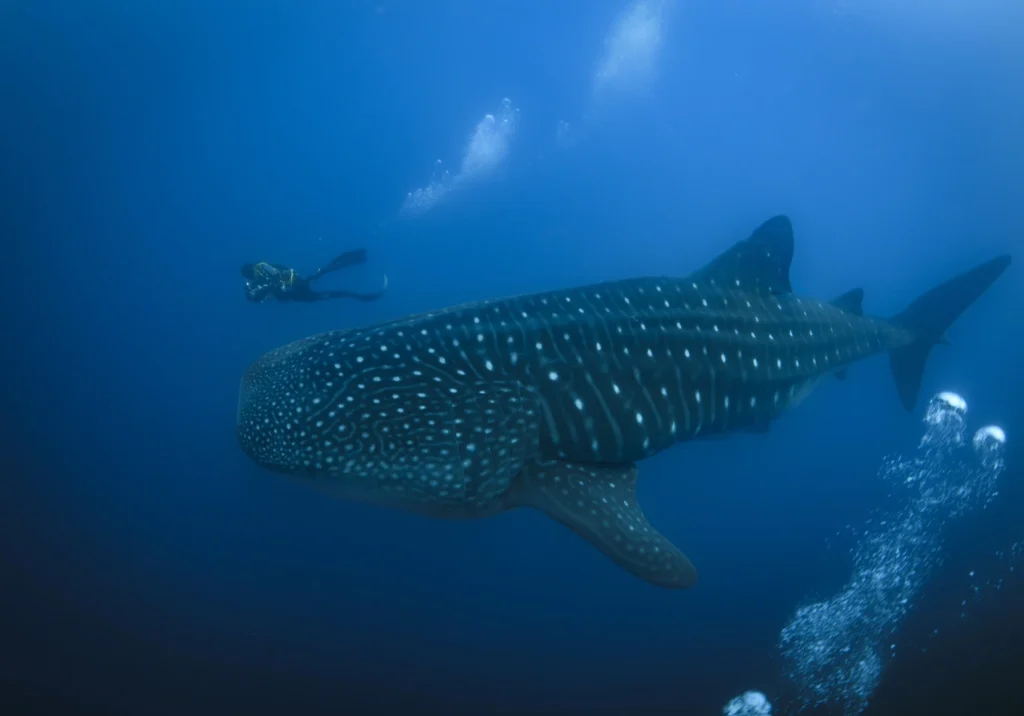Nestled in the vast expanse of the Pacific Ocean, the Galápagos Islands stand as a testament to the wonders of nature and the intricate balance of life on Earth.
The recent collapse of Darwin’s Arch, a natural rock formation named after the legendary naturalist Charles Darwin, serves as a stark reminder of the fragility of this remote archipelago.
As the warm morning light reflects off the remains of this iconic structure near Darwin Island, a profound sense of loss and urgency permeates the air, signaling the challenges that the Galápagos face in the modern era.
The Galápagos Islands have long been celebrated for their unparalleled biodiversity and unique array of species, many of which are endemic to this isolated paradise.
From the graceful marine iguanas to the majestic hammerhead sharks, the waters surrounding these islands teem with life, each species playing a vital role in the intricate web of ecosystems that define the Galápagos.
However, the 2021 collapse of Darwin’s Arch, attributed to natural erosion, serves as a poignant metaphor for the broader threats that loom over this pristine environment.
Climate change, with its far-reaching impacts on ocean temperatures and marine ecosystems, poses a significant challenge to the delicate balance of life in the Galápagos.
Warming oceans disrupt the food sources of many seagoing animals, pushing species such as marine iguanas and sea turtles to the brink of survival.
Endemic species, which have evolved over millennia to thrive in the unique conditions of the Galápagos, now find themselves struggling to adapt to rapidly changing environmental conditions.
The decline in food availability, exacerbated by rising sea temperatures and dwindling nutrient levels, poses a grave threat to the survival of species that call the Galápagos home.
For marine iguanas, the scarcity of red and green algae, their preferred food source, has led to increased competition and decreased reproductive success.
Sea turtles, iconic inhabitants of the Galápagos, face challenges in nesting and raising their young as the warming climate alters the conditions of their natural habitat.

Natasha Cabezas, a seasoned naturalist guide intimately familiar with the intricacies of the Galápagos ecosystem, aptly captures the essence of the islands’ biodiversity: “We have something of everything here – that’s why people say the Galápagos is so diverse – but we have a small number of each thing.”
The richness of the Galápagos lies not only in the sheer variety of species that inhabit these islands but also in the delicate balance that sustains this extraordinary ecosystem.
As the Galápagos Islands come under increasing pressure from climate change and invasive species, urgent action is needed to protect this unique natural heritage for future generations.
Conservation efforts, informed by scientific research and guided by a deep respect for the interconnectedness of all life forms, are crucial to safeguarding the Galápagos and preserving its unparalleled biodiversity.
By raising awareness of the challenges facing this fragile ecosystem and fostering a sense of stewardship among visitors and residents alike, we can work together to ensure that the Galápagos Islands remain a beacon of hope and inspiration for generations to come.
In the wake of Darwin’s Arch collapse, let us heed the lessons of the past and take decisive action to protect the Galápagos Islands, not only for the myriad species that call this place home but for the future of our planet.
The time to act is now, for the Galápagos are not just a remote archipelago in the Pacific Ocean – they are a living testament to the beauty and resilience of nature, deserving of our utmost care and protection.
The Galapagos Islands, with their unique ecosystem and delicate balance of natural forces, have long been sensitive to changes in ocean temperature.
Situated at the convergence of major ocean currents – cool from the south, warm from the north, and a cold upwelling current from the west – the archipelago is intricately connected to the vast expanse of the ocean that surrounds it.
In addition to these regular oceanic influences, the region is also affected by El Nino, a periodic and natural Pacific Ocean warming event that has far-reaching effects on global weather patterns.
While fluctuations in ocean temperatures occur naturally due to seasonal changes and other climate phenomena, the overarching trend of rising ocean temperatures is largely attributed to human-induced climate change.
Oceans act as reservoirs of heat, absorbing the excess warmth generated by greenhouse gas emissions. The past decade has witnessed the warmest ocean temperatures on record since reliable measurements began in the 1800s, with 2023 standing out as the warmest year yet.
The onset of early June marks winter in the Southern Hemisphere, a time when the Cromwell current brings forth a magnificent display of marine life.
Whale sharks, hammerheads, and giant sunfish emerge near the surface, while penguins, marine iguanas, and sea lions eagerly seek out the nourishing bounty that the current provides.
However, the impact of warming oceans, exacerbated by events like El Nino, poses challenges for these species. During El Nino events, food shortages can occur, leading to population declines among vulnerable species such as marine iguanas and sea turtles.
One of the most iconic sights in the Galapagos is that of marine iguanas gracefully swimming through the water, moving agilely from one rocky outcrop to another in search of algae.
These unique creatures, along with other marine species, have borne the brunt of recent environmental changes.

Jorge Carrión, Director of the Galapagos Conservancy, notes the significant strain placed on the iguana populations by recent El Nino events, emphasizing the ongoing process of recovery that these species are undergoing.
While the marine ecosystem grapples with the challenges posed by rising ocean temperatures, a different threat looms on land in the form of invasive animal species.
Feral animals like cats, dogs, pigs, goats, and cattle, introduced to the islands by human activities, are disrupting the delicate ecological balance of the Galapagos.
The abandonment of pets post-COVID-19 has exacerbated the issue, leading to a proliferation of stray animals that now pose a significant challenge to the native fauna of the islands.
Among the most vulnerable to these threats are the iconic giant tortoises of the Galapagos, which have faced historical pressures from hunting and poaching. Efforts to protect the tortoises have been in place for decades, with strict regulations prohibiting their killing since 1933.
However, the invasion of feral pigs, in particular, poses a grave danger to the tortoise populations, as these voracious animals can decimate entire nesting sites in a single night.
In addition to invasive species and warming oceans, the presence of plastic pollution further exacerbates the environmental challenges facing the Galapagos Islands.
Microplastics have been found in the digestive tracts of Galapagos penguins, underscoring the pervasive nature of plastic pollution in the world’s oceans.
Jorge Carrión highlights the alarming reality that virtually every animal in the Galapagos now contains some level of microplastic contamination in their food, pointing to the urgent need for concerted action to address this pressing issue.

The intricate web of life in the Galapagos Islands is under siege from multiple fronts, ranging from the insidious impacts of climate change and warming oceans to the relentless encroachment of invasive species and the pervasive threat of plastic pollution.
Preserving the unique biodiversity and fragile ecosystems of the Galapagos requires a multi-faceted approach that combines conservation efforts, sustainable practices, and global cooperation to ensure the long-term survival of this invaluable natural treasure.
Only through collective action and a shared commitment to environmental stewardship can we safeguard the Galapagos for future generations to cherish and protect.
